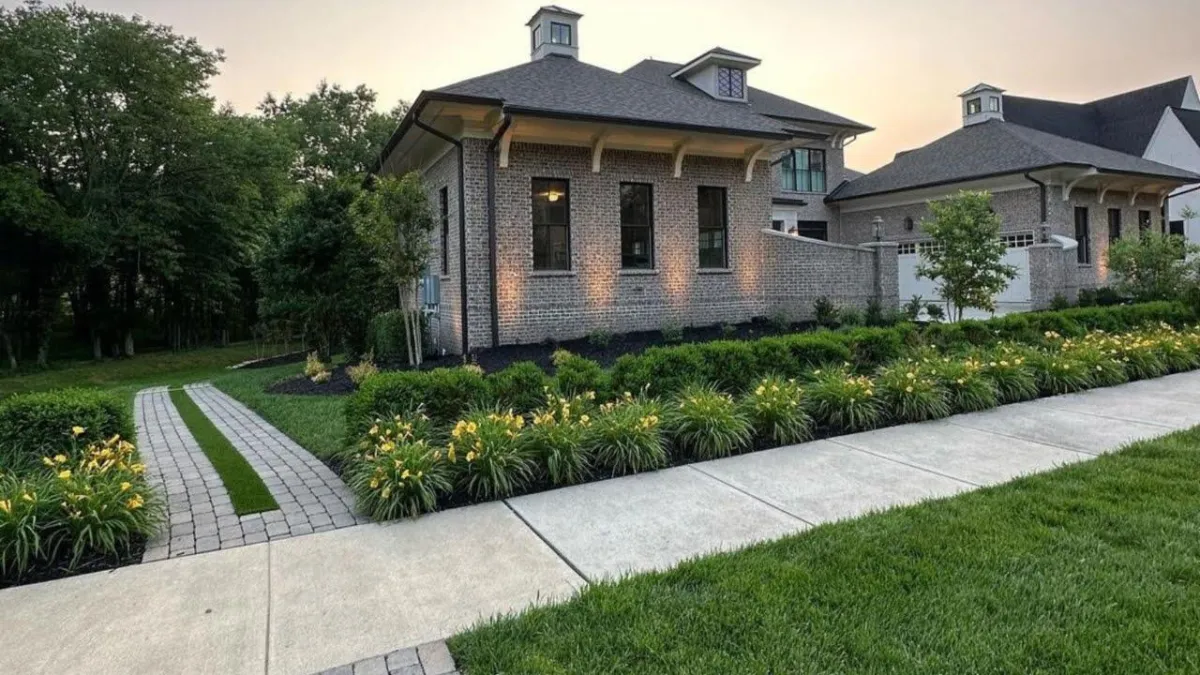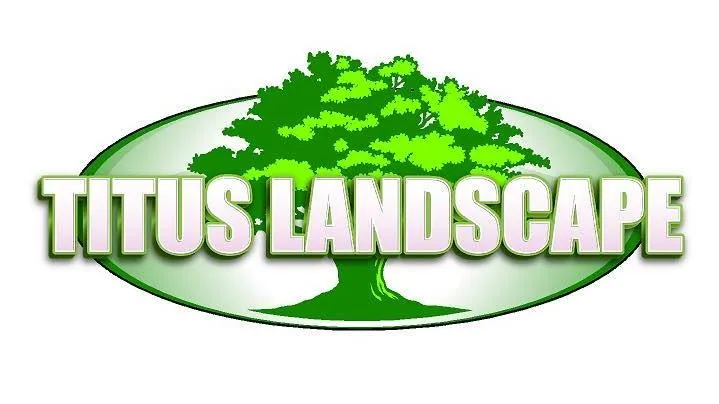Blogs

What Permits Or Regulations Apply To Landscaping Projects?
Permits and regulations for landscaping projects vary by location and project scope. Common requirements include permits for building structures like decks and patios, installing fences, removing trees, and setting up irrigation systems. Always check with your local municipality or building department for specific requirements.
Landscaping projects can significantly enhance the beauty and functionality of your outdoor space, but it's crucial to navigate the permit and regulatory landscape to ensure your project is legally compliant. Several types of permits may be required depending on the project's size, scope, and location. At Titus Landscape, we understand the complexities involved in landscaping in Murfreesboro, TN, and are here to guide you through every step.
Key Takeaways:
Permits may be required for projects disturbing more than 2,500 square feet of soil or changing the grade by more than 24 inches.
Specific features like swimming pools, retaining walls over two feet, and structures like gazebos always require permits.
Projects involving electrical, plumbing, or gas lines need additional permits.
Tree removal and projects in Resource Protection Areas (RPAs) or on steep slopes may need extra documentation and inspections.
The permit application process involves submitting detailed designs and specifications, paying fees, and meeting submission deadlines.
Obtaining permits ensures legal compliance, preserves property values, and provides documentation for future property sales.
Local Zoning Laws for Landscaping
Understanding local zoning laws is crucial when planning any landscaping project. These regulations ensure that landscaping changes are consistent with community standards and environmental guidelines. Here are key aspects of local zoning laws that often apply to landscaping projects:
Setbacks and Property Lines
Zoning laws often dictate how close you can plant trees, shrubs, and other vegetation to your property line. This is to prevent disputes with neighbors and ensure accessibility for maintenance.
Height Restrictions
Some areas have height restrictions for fences, hedges, and retaining walls. These rules help maintain sightlines for drivers and pedestrians and preserve the overall aesthetic of the neighborhood.
Permitted Uses
Zoning regulations may specify what types of landscaping features are permitted in certain areas. For instance, you might be restricted from installing certain types of water features, outdoor structures, or large-scale garden beds.
Drainage and Erosion Control
Landscaping projects must adhere to rules regarding water drainage and erosion control. This ensures that changes to your landscape do not negatively impact neighboring properties or public infrastructure.
Environmental Protections
Many local zoning laws include provisions to protect natural resources. This can include restrictions on removing mature trees, requirements for native plantings, and rules for managing stormwater runoff.
Historic District Regulations
If your property is in a historic district, additional guidelines may apply. These can dictate the types of materials and designs that are permissible to maintain the area's historical character.
Permits and Approvals
Large landscaping projects often require permits and must be approved by local zoning boards. This typically involves submitting detailed plans and possibly attending public hearings.
Maintenance Requirements
Zoning laws may include regulations on maintaining landscaped areas, such as keeping lawns mowed, pruning trees, and removing debris. This helps ensure properties remain attractive and safe.
Understanding and complying with these local zoning laws is essential for a successful and hassle-free landscaping project.
Building Permits for Decks and Patios in Landscaping
Building permits are essential for constructing decks and patios as part of landscaping projects. These permits ensure that structures meet safety standards and comply with local building codes. Here’s what you need to know about obtaining building permits for decks and patios:
Structural Integrity: Building permits require that decks and patios meet structural integrity standards. This ensures they can safely support the weight of furniture, occupants, and withstand weather conditions.
Size and Height: Permits often specify maximum size and height limits for decks and patios. This prevents oversized structures that could impact neighboring properties or violate zoning regulations.
Footings and Foundations: Proper footings and foundations are critical for deck stability. Building permits require detailed plans showing how footings will be installed and ensuring they meet load-bearing requirements.
Materials and Construction Methods: Permits may specify acceptable materials and construction methods for decks and patios. This ensures durability, safety, and compliance with environmental regulations.
Setback Requirements: Decks and patios must often maintain setbacks from property lines and other structures. This prevents encroachment on neighboring properties and ensures accessibility for maintenance.
Safety Features: Building codes mandate safety features such as handrails, guardrails, and stairs for elevated decks. Permits require detailed plans showing these features meet safety standards.
Accessibility: Decks and patios must comply with accessibility requirements, ensuring they are usable for individuals with disabilities where applicable.
Inspections: Building permits involve inspections at various stages of construction. Inspectors verify that work complies with approved plans and meets safety standards before work can proceed to the next phase.
Obtaining a building permit for your deck or patio is essential to avoid fines, delays, or legal issues.
Fence Installation Regulations in Landscaping Projects
Installing a fence is a common aspect of landscaping projects, but it's important to adhere to local regulations to ensure compliance and avoid potential issues. Here’s an overview of fence installation regulations you should be aware of:
Height Restrictions: Many areas have height restrictions for fences, typically ranging from four to eight feet. Front yard fences are often limited to lower heights than those in the backyard to maintain neighborhood aesthetics.
Material Guidelines: Local regulations may specify acceptable fence materials, particularly in historic districts or areas with architectural guidelines. Common materials include wood, vinyl, chain-link, and wrought iron, each with its own aesthetic and maintenance considerations.
Setback Requirements: Fences must often maintain setbacks from property lines and public rights-of-way. This ensures accessibility for maintenance and prevents disputes with neighbors.
Permit Requirements: Depending on local regulations, you may need a permit to install a fence. This typically applies to fences above a certain height or in specific zoning districts. Permit requirements may include submitting a site plan showing the fence location and dimensions.
Boundary Issues: It's crucial to accurately determine property lines before installing a fence to avoid encroaching on neighboring properties. Professional surveyors can assist in identifying property boundaries.
Design and Aesthetics: Some communities have design guidelines for fences, particularly in residential areas. These guidelines may address issues such as fence color, style, and visibility through the fence.
Safety Features: Gates and doors in fences must often include safety features such as self-closing mechanisms and latches to prevent unauthorized access, especially around pools or in childcare facilities.
Maintenance Obligations: Homeowners are typically responsible for maintaining their fences in good condition. This includes repairing damage and keeping vegetation trimmed to prevent damage to the fence.
By understanding and complying with these regulations, you can ensure your fence installation project proceeds smoothly and meets local requirements.
Tree Removal Permits for Landscaping
Tree removal permits are crucial for landscaping projects that involve removing trees, as they ensure compliance with environmental regulations and community guidelines. Here’s what you need to know about obtaining tree removal permits:
Protected Species: Some areas protect specific tree species, particularly native or endangered trees. Permits may be required to remove these trees, and replacement planting may be mandated.
Size and Quantity: Regulations often specify size thresholds for trees that require permits for removal. Large or mature trees may have greater protections than smaller ones.
Environmental Impact: Tree removal permits consider environmental impact assessments. This includes evaluating potential effects on soil erosion, wildlife habitats, and overall ecosystem health.
Urban Planning: Urban areas may have tree removal ordinances aimed at preserving green spaces, maintaining urban canopy cover, and improving air quality.
Historic Preservation: In historic districts, trees may contribute to the area’s character and require permits for removal. Replacement trees may need to match historic species and aesthetics.
Permit Application Process: Applying for a tree removal permit typically involves submitting detailed plans, including reasons for removal, replacement plans, and site impact assessments.
Community Input: Some permits may require public notices or hearings to gather community input on proposed tree removals, especially in public spaces or conservation areas.
Penalties for Non-compliance: Unauthorized tree removal can result in fines, restoration requirements, and legal repercussions. Understanding and adhering to permit requirements is essential to avoid these consequences.
Navigating tree removal permits requires knowledge of local regulations and environmental considerations.
FAQs
1. Do all landscaping projects require permits?
Not all projects require permits. Small-scale projects like planting flowers or shrubs typically do not need permits, but larger projects involving structural changes or significant land disturbance will.
2. How do I know if my project needs a permit?
Consult with local building authorities or a professional landscape company like Titus Landscape to determine if your project requires a permit based on its scope and location.
3. What happens if I don't obtain the necessary permits?
Failing to obtain required permits can lead to project delays, fines, or stop-work orders. It may also affect property values and complicate future sales.
4. How long does the permit approval process take?
The timeline for permit approval varies based on the project complexity and local regulations. It can take anywhere from a few days to several weeks.
5. Can Titus Landscape help with the permit process?
Yes, Titus Landscape can assist with the entire permit process, ensuring all necessary documentation is submitted and regulations are met, allowing your project to proceed smoothly.
Ensuring Compliance with Landscaping Permits for a Seamless Project
Navigating the complexities of landscaping permits can be daunting, but with the right guidance, it becomes manageable. At Titus Landscape, we specialize in transforming outdoor spaces while ensuring full compliance with all necessary regulations.
Titus Landscape is here to help you navigate the permit process and create a stunning outdoor space tailored to your needs. Whether you're looking to add a new feature or completely redesign your yard, our expert team is ready to assist. Don't wait any longer – Contact us now and let's get started on your landscaping project in Murfreesboro!
THE BEST IN LANDSCAPE & OUTDOOR LIVING
Get your free quote today!
Contact Us
Rockvale, Tennessee 37153
Mon - Fri 8:00 am - 6:00 pm
Follow Us
© 2024 Titus Landscape. All Rights Reserved. Privacy Policy. Terms & Conditions. Web Design by Fused Media

